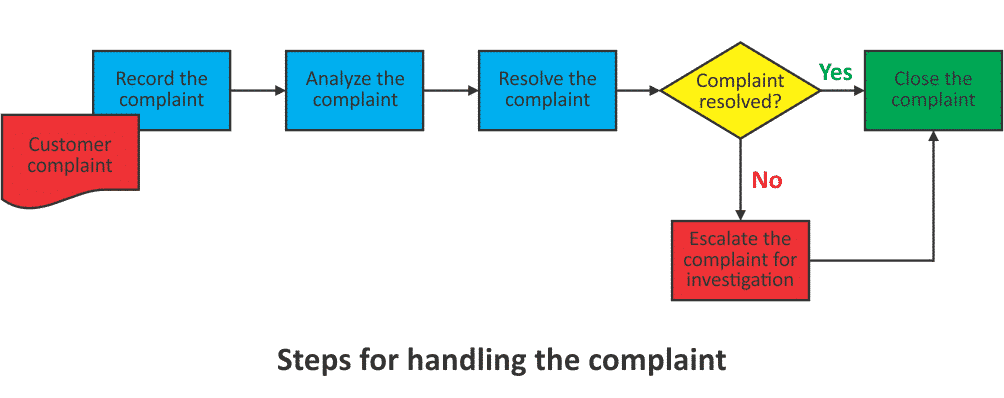 Ana Meskovska
Ana Meskovska
September 16, 2014
Dealing with complaints is tricky; however, in a business environment you have to deal with complaints. But, why should you think about improving your complaints management approach? Because an effective complaints management system can help you: Identify opportunities for improvement of your processes and products/services; Eliminate the root cause of the complaints and stop problems from happening again, instead of just dealing with the complaints when the problem happens; Deal with a complaint in its early stages, avoiding escalations and problems; and eventually improve the company image and customer satisfaction and loyalty.
When designing your complaint handling system, focus on your customers. Create a complaint system that is convenient for your type of customers, a system that is easy to use and encourages customers to complain. Statistics show that only 4% of unsatisfied customers complain, while the rest switch to competitors, but that 90% of customers who have resolved complaints stay loyal.
An essential thing for an effective management system is to establish a documented complaint handling procedure and to maintain relevant and detailed records. Additionally, all employees should be introduced to the complaints handling procedure; they should be trained to use the procedure and should be aware of the importance and benefits from it.
The complaints handling procedure should consist of two parts. The first part should be intended for your customers, explaining the process of filing a complaint and what to expect; and the second part should cover the activities that need to be conducted internally, by your employees.
Complaints handling procedure for customers. Your company should have a documented procedure for filing complaints that is promoted to your customers. This procedure should explain how a customer can file a complaint. A customer should be able to make a complaint through different communication channels, e.g., in writing, in person, by telephone, by email, online, comment box, etc. This procedure should explain what the customer can expect as feedback to their complaint, and the expected timeframe for your feedback. The procedure should be short, informative, and easy to use, and should have an encouraging effect on your customers.
Internal complaints handling procedure. The internal procedure should define the roles and responsibilities of the employees related to complaints handling activities, the steps for handling complaints, and the system for documenting the complaints.
An effective complaints handling procedure should provide a mechanism for learning and improving products/services. For those purposes, the internal procedure should cover analysis of the data and management reporting, identifying trends, and proactive identification of problems.
The main focus of the procedure should be on quick resolution of complaints. Depending on your company, this may include an apology for late delivery, a face-to-face discussion with the customer, a refund, compensation, exchange of product, etc.
The procedure should include a detailed description and instructions for the following steps:

1) Record the complaint. When your company receives a complaint, it must be recorded appropriately in your complaints system. All complaints (phone calls, e-mails, hand-written comments from the comment box, etc.) should be recorded by the corresponding responsible person.
2) Analyze the complaint. All complaints should be analyzed initially in order to decide whether a quick resolution is possible or escalation is needed.
The complaints should be dealt with as soon as possible; however, a timeframe for quick resolution should be defined. If the complaint can’t be resolved in this timeframe, escalation of the complaint is required, and the customer should be informed that their complaint is being investigated.
Not all complaints can be resolved quickly to the satisfaction of both parties. The procedure should set criteria for when a complaint should be escalated. General cases when complaints are escalated for investigation are:
3) Resolve the complaint. There should be designated persons for dealing with complaints. The two most important things that this person should take into account are what does the customer want to achieve by complaining, and can he/she resolve the complaint or should someone else be involved?
4) Investigate the complaint. In cases when a complaint is escalated for further investigation, the decision making should be on a higher management level. This step will vary by industry, types of services and products you provide, the size of your company, etc. The investigation should be tailored according to your company needs.
5) Close the complaint. The responsible person should communicate the resolution to the customer by their preferred method of contact and document the resolution in the system. The feedback to the complaint should address all aspects of the complaint and provide a detailed explanation of the proposed resolution.
If the customer doesn’t accept the resolution, the complaint should be re-opened and escalated for investigation.
Designing a suitable complaints handling procedure is not enough for effective management of complaints, but it is the first step. The procedure should be implemented, used, and continually improved. You company should start seeing complaints as opportunities, not as problems. Only with this kind of approach can the benefits from the complaint management system be maximized.
Enroll in this free online training: ISO 9001 Foundations Course to learn more about complaints.